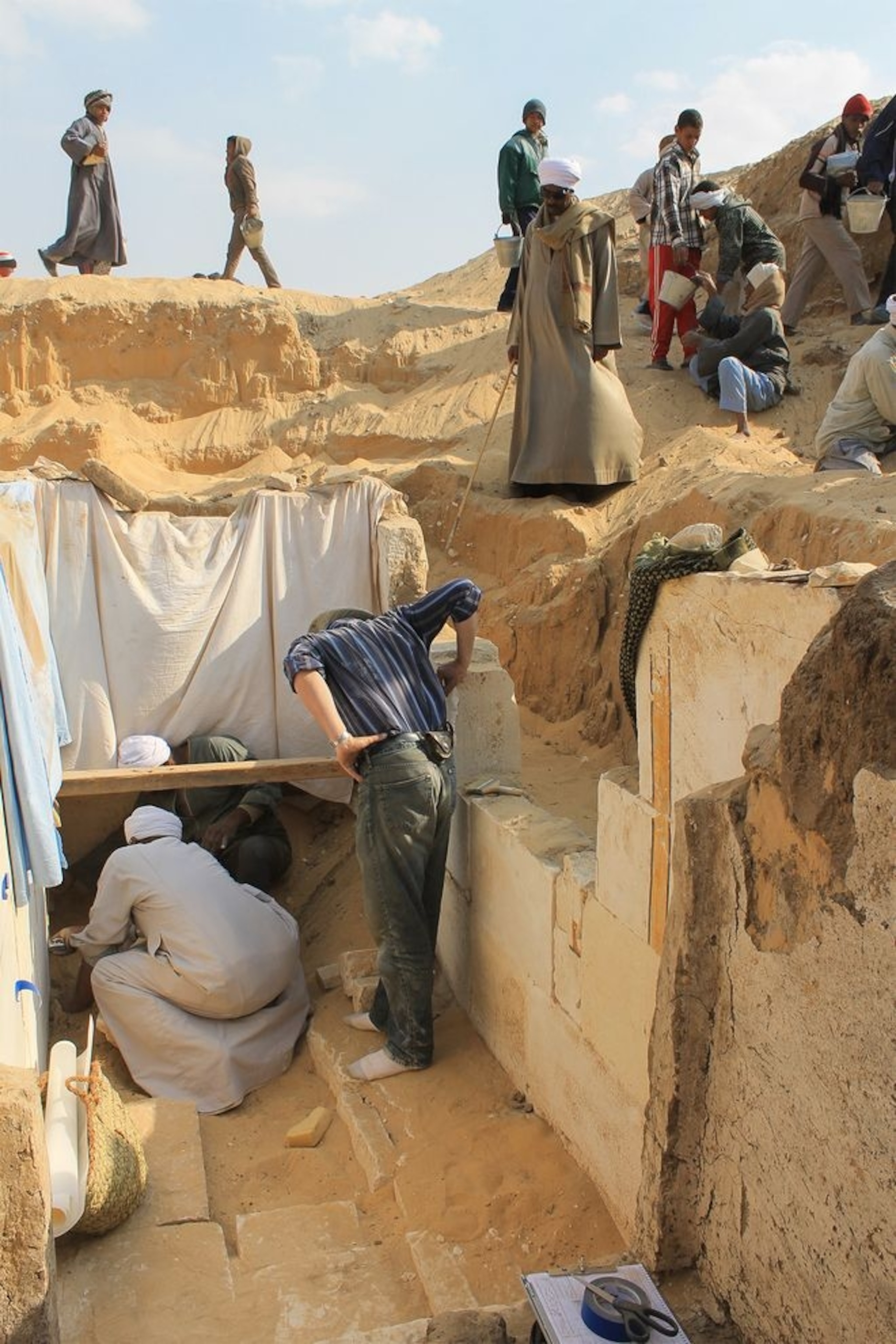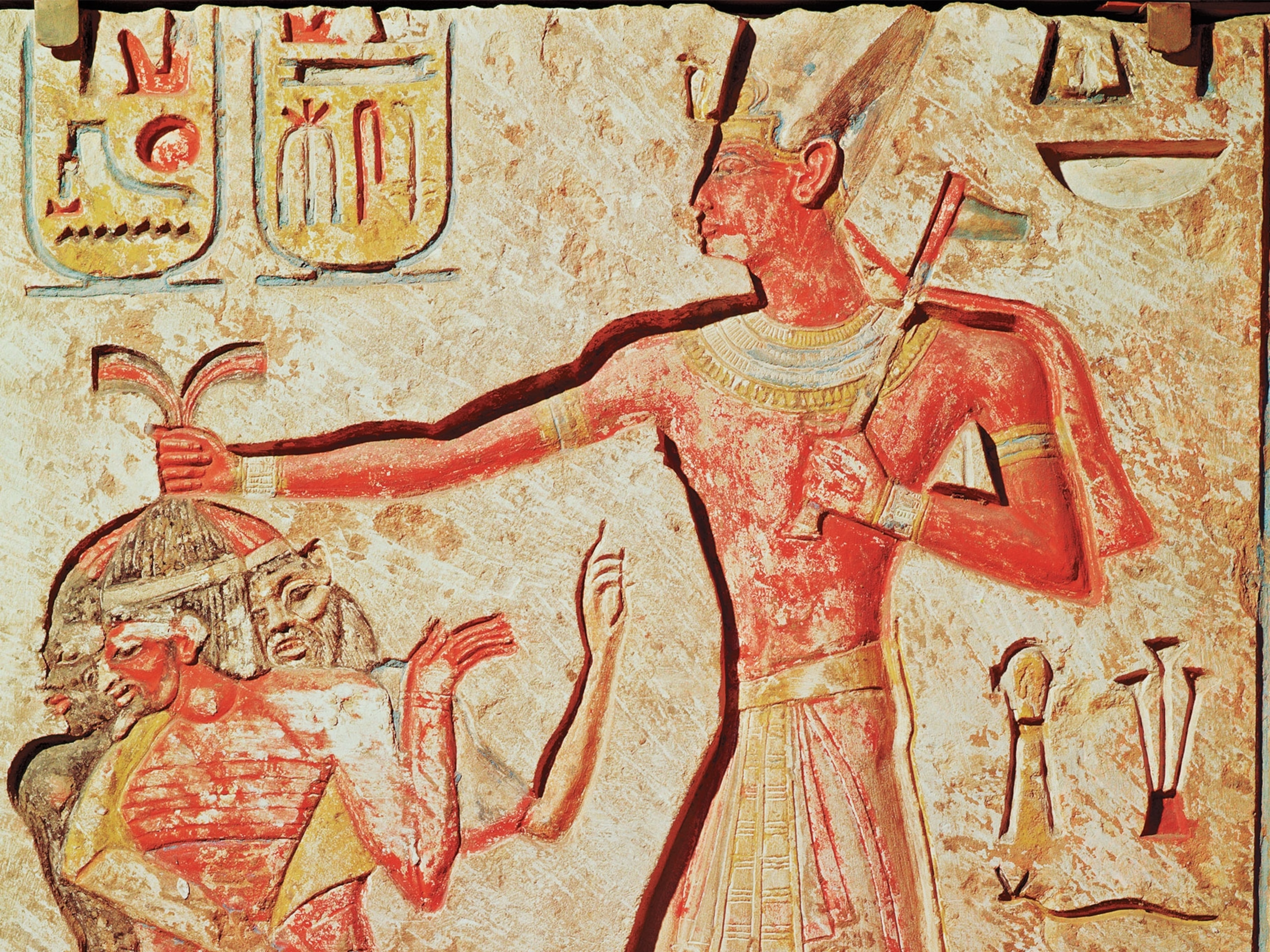
Pharaoh of "Lost Dynasty" Died Brutal Death, Forensic Study Reveals
Forgotten pharaoh may have been earliest Egyptian ruler to die in battle.
Skeletal analysis of a little-known Egyptian pharaoh, whose remains were discovered only last year, has revealed dramatic details about the ruler's violent death.
King Senebkay lived between 1650 and 1550 B.C. near the ancient Egyptian cemetery of Abydos, about 300 miles (483 kilometers) south of Cairo. He was one of four mysterious pharaohs whose tombs were discovered in January 2014 and who belonged to a previously unknown royal dynasty.
A recent analysis of Senebkay's skeleton revealed that he was assailed by multiple adversaries wielding bronze "duck-bill" axes. The pharaoh received 18 blows that penetrated to the bone, including lethal strikes to his skull and back.
"It looks very brutal," said Joe Wegner, an archaeologist at the University of Pennsylvania, in Philadelphia, who led the excavation. "He was likely swamped by attackers stabbing and slashing him."
Clues to Manner of Death, Way of Life
Studying the angles and locations of the blows allowed Wegner and his team to offer a speculative scenario that explains the pattern of trauma.
Senebkay was probably mounted on horseback when he was first attacked. A major wound to his right ankle would have nearly severed the foot and caused massive bleeding. Marks on his knees and hands indicate an overwhelming onslaught, and blows to the lower back seem to have been delivered while he was in a seated posture.
By the time he suffered three devastating ax blows to the head, Senebkay had likely fallen to the ground. One strike landed with such force that the curvature and thickness of the blade are actually impressed on his cranium.
"Someone really wanted him dead," Wegner said. While an assassination by rival political elites is possible, Wegner thinks the pharaoh died in battle or during an ambush. "To me the physical evidence looks like a savage attack by trained soldiers."

The skeletal analysis, conducted by Jane Hill and Maria Rosado of Rowan University, in Glassboro, New Jersey, yielded an age range of 35 to 40 years for Senebkay at the time of his death. It also showed that he was unusually tall for the time, standing between five feet seven inches and six feet in height.
Senebkay lived and died during ancient Egypt's Second Intermediate Period, a time of political fragmentation and reduced material wealth. His tomb was one of seven subterranean structures clustered around an area roughly 150 feet (46 meters) in diameter. Substantial skeletal remains were found in four of the seven tombs.
The other three skeletons discovered in the necropolis are believed to belong to pharaohs from the same period, but Senebkay was the only one whose name could be identified. The walls of his tomb bore a cartouche, an oval figure with a horizontal line that indicates the enclosed name is royal. His name also matches a name listed on a crumbling papyrus fragment known as the Turin King List.

Muscle attachments and bone ridges on Senebkay's femur and pelvis show that he spent considerable time mounted on some kind of equine animal. Horses were introduced into Egypt from the Near East around this time, and inscriptions of a slightly later date provide evidence of the use of horses among pharaohs and the military elite.
Dynasty of Warrior Kings
One of the other skeletons from the same necropolis belonged to an athletic and well-built man who spent substantial time performing a repetitive and demanding activity with his left arm. Archery or combat drills are likely possibilities, and Wegner said the seven tombs may represent a dynasty of warrior-kings. DNA testing to determine whether the individuals were genetically related has not yet been performed.
A dynasty at Abydos during this period would likely have faced threats from the Hyksos kings in the north or the Theban kings in the south, but internal rivalries also could have caused conflict.
It's unknown where Senebkay died or how large a territory he ruled, but the presence of linens quite close to his bones suggests he was not mummified immediately after death. His body was exposed or transported for some period of time, probably a few weeks, before he was mummified and buried.
Excavations at Abydos, funded in part by the National Geographic Society, will resume this summer.





